Invents New Sustainable Materials and Turns Geothermal Power Station into Bathhouse Winning NCKU Student a Golden Award
Edited by Elysee Chung. Image credit to Hong-Ming Zeng.
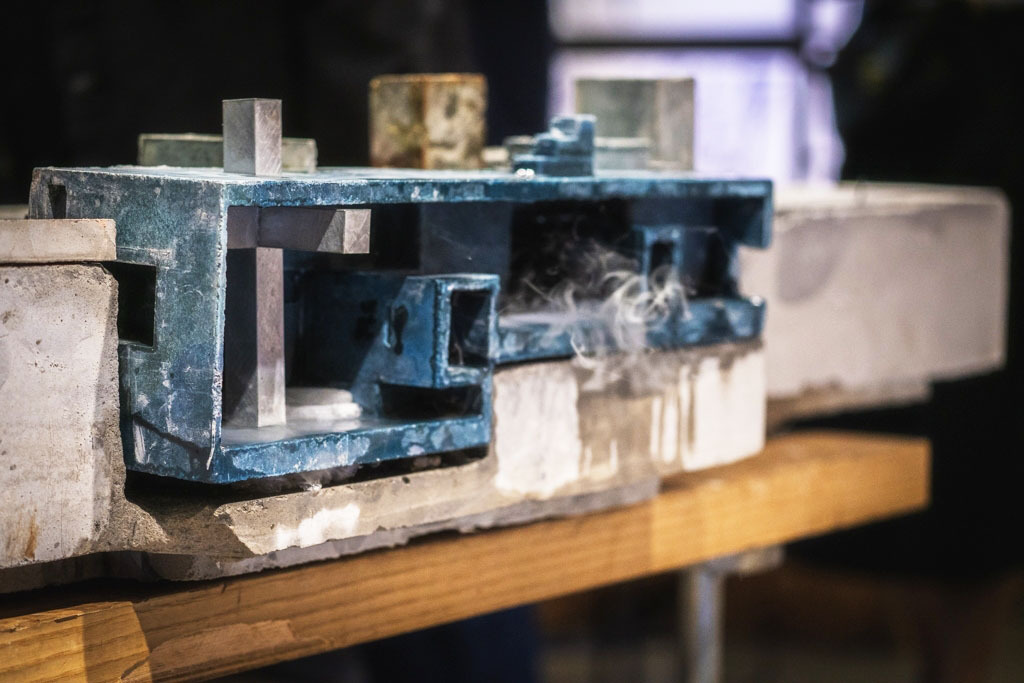
Hong-Ming Zeng(曾泓銘), the bachelor of the Department. of Architecture of NCKU, designs “Yu-Di-Yi-Jan,” which turns the geothermal power station into a bathhouse.
Hong-Ming Zeng (曾泓銘), the bachelor of the Department of Architecture of National Cheng Kung University (NCKU), transforms a geothermal power station into a bathhouse, a place where locals can visit daily. He named his graduation project “Yu-Di-Yi-Jan(喻地譯站),” which was awarded the first place (Gold Award) in the Taitung County Government's Build-UP Taitung Exhibition of Landscape Architecture Graduation Design in August 2022.
Zeng said, there is much energy – geothermal energy – stored under the land of the Taimali-Chinlun Geothermal Area in Taitung. Inspired by the landscape's view, Zeng came up with the concept of a public bathhouse. He combined ash, the remainder of the geothermal power generation, with local laterite and serpentine to make sustainable ready-mixed concrete. His innovation – the sustainable material – and his brilliant idea have won the attention of the judges.
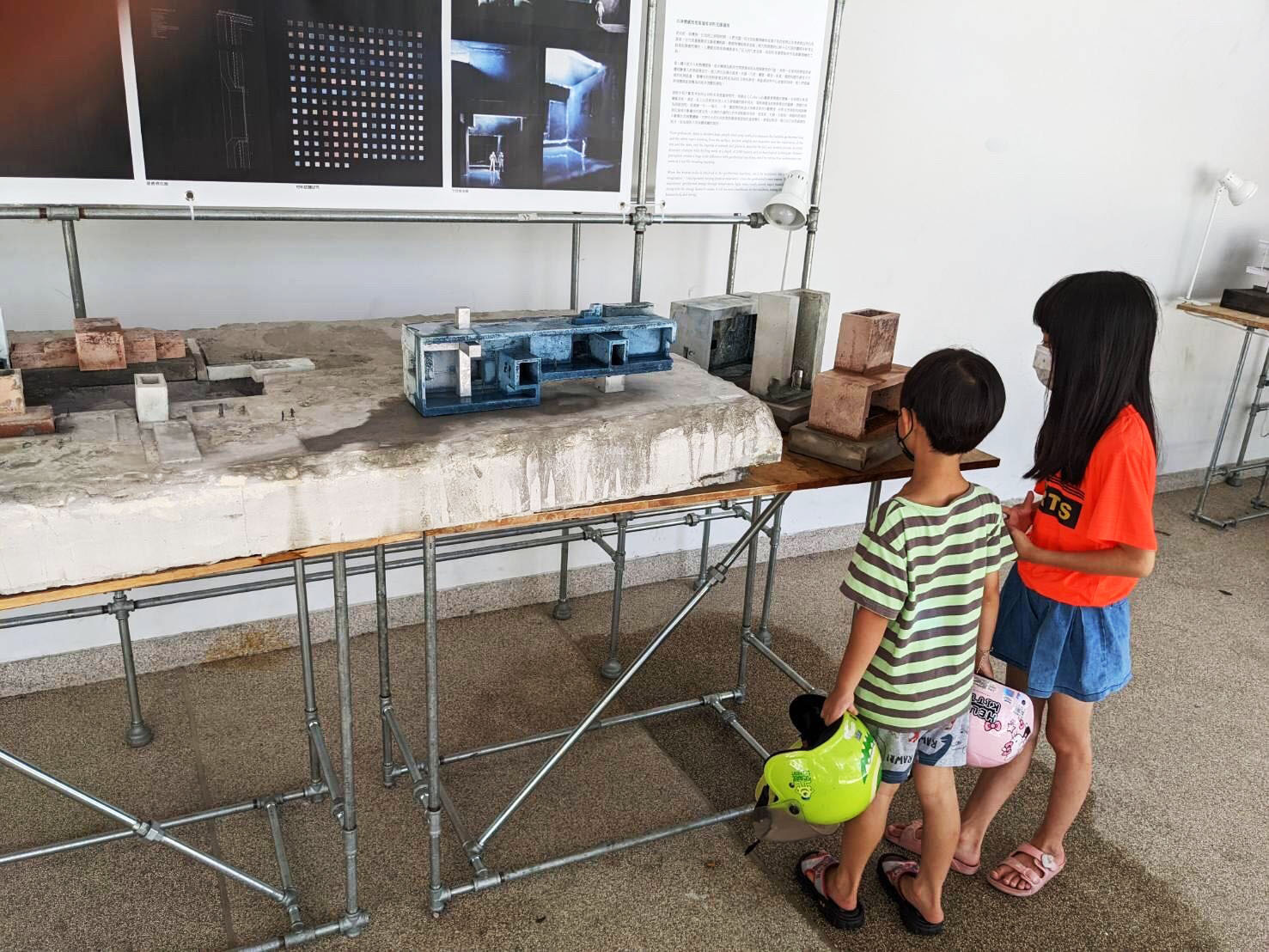
“Yu-Di-Yi-Jan” turns the geothermal power station into a bathhouse, enabling daily visits of the locals.
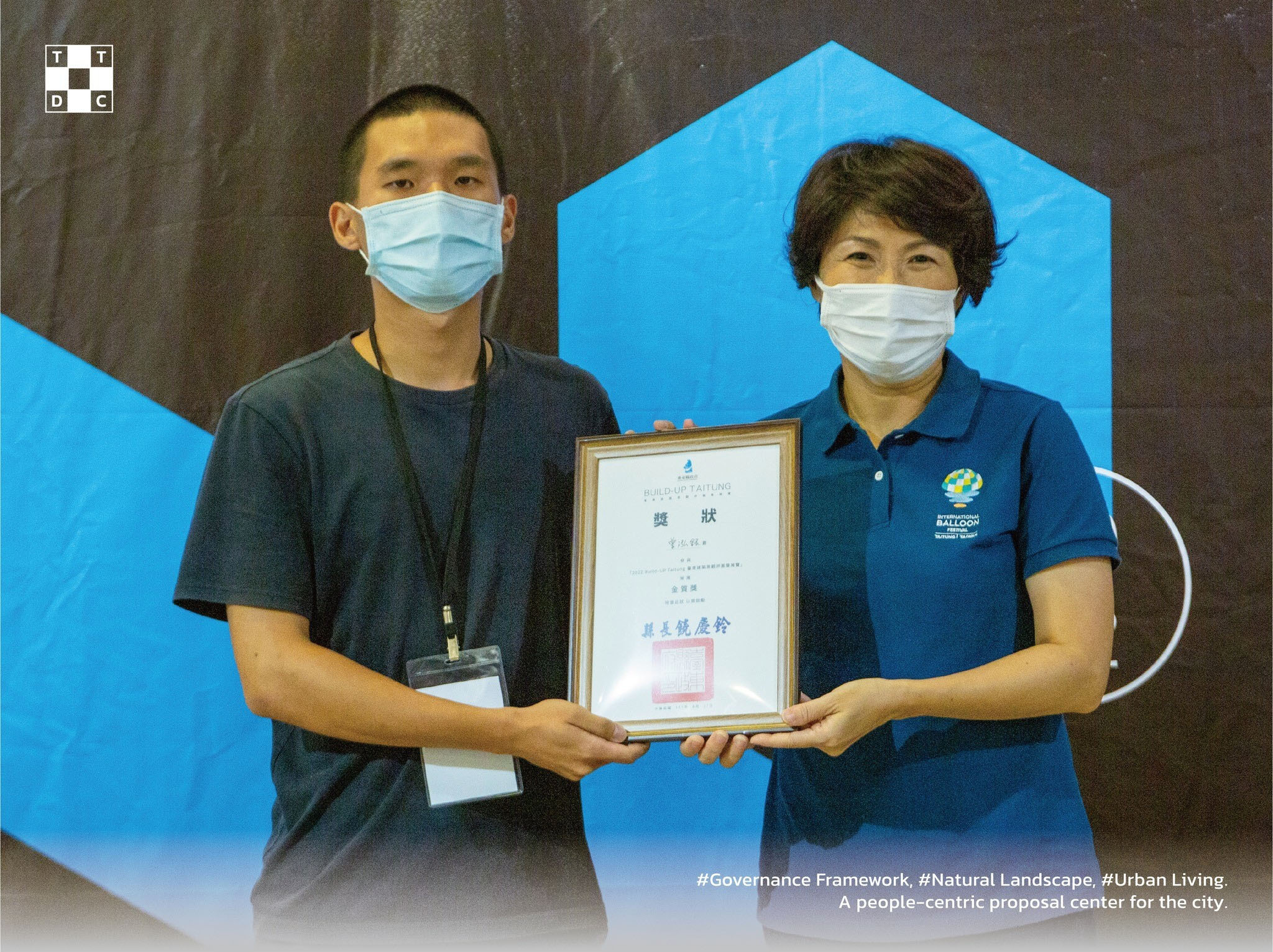
Zeng won a gold award in Build-UP Taitung Exhibition of Landscape Architecture Graduation Design. (Credit to Taitung Design Center)
“I used my hands and eyes to record my feelings about the environment,” Zeng said. “Yu-Di-Yi-Jan” is the graduation project in his fifth year of college. During the summer when he had to start developing the idea of the graduation project, he rented a car with his classmates and traveled in Taitung for about two or three days. Being curious about geothermal energy, he visited Taimali-Chinlun Geothermal Area for the first time of his life. There, He saw mysterious white smoke and steam constantly bursting out from the ground. As he entered the area, he heard low-frequency vibrating sounds and felt the hot air. Zeng was shocked by the scene of the hot water being drawn from the land when he looked around. He was touched by the view and the strong geothermal energy, and started to think about ways to express the magnificence of the land and his feelings at that moment through architectural design.
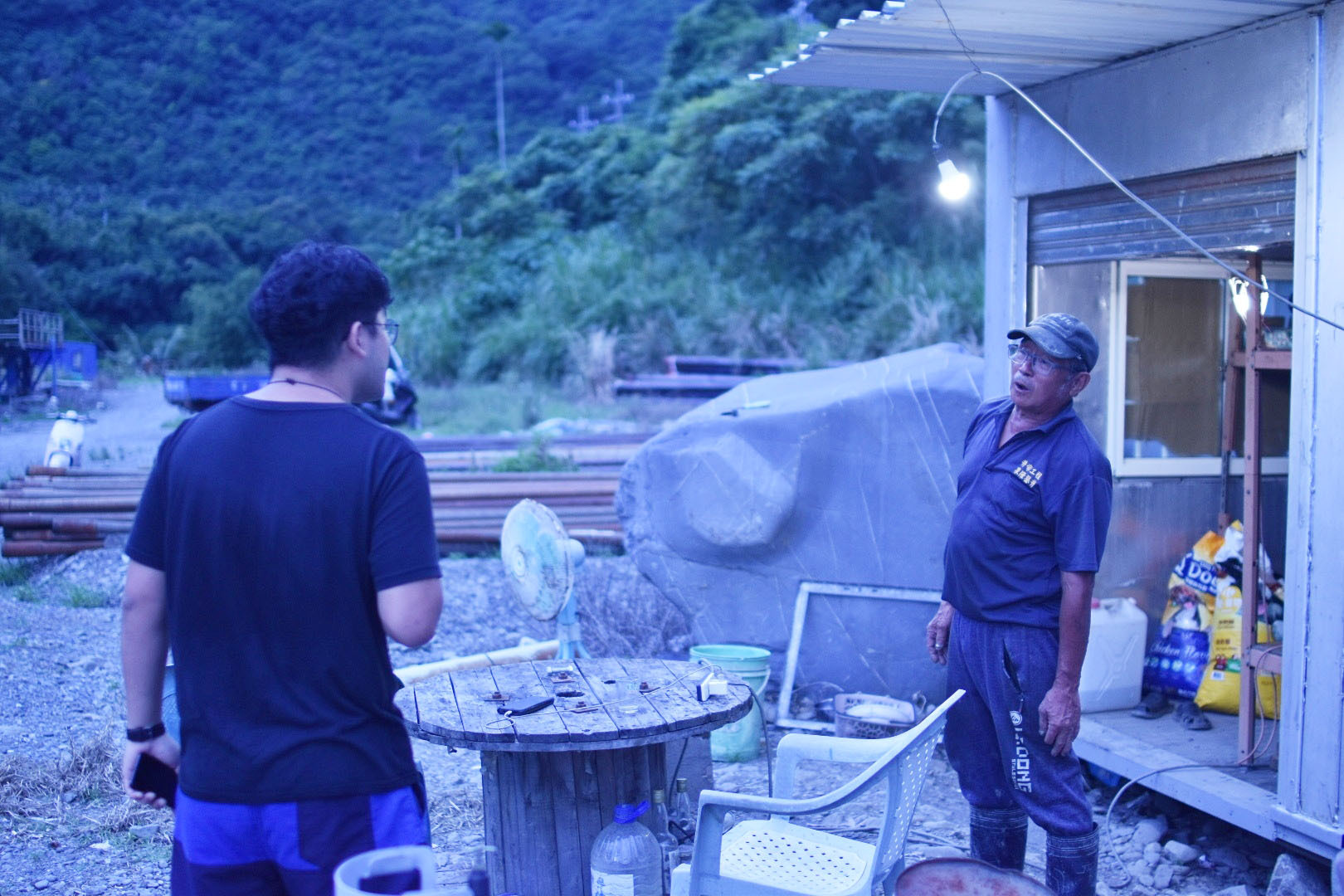
Zeng investigates in Taimali-Chinlun Geothermal Area.
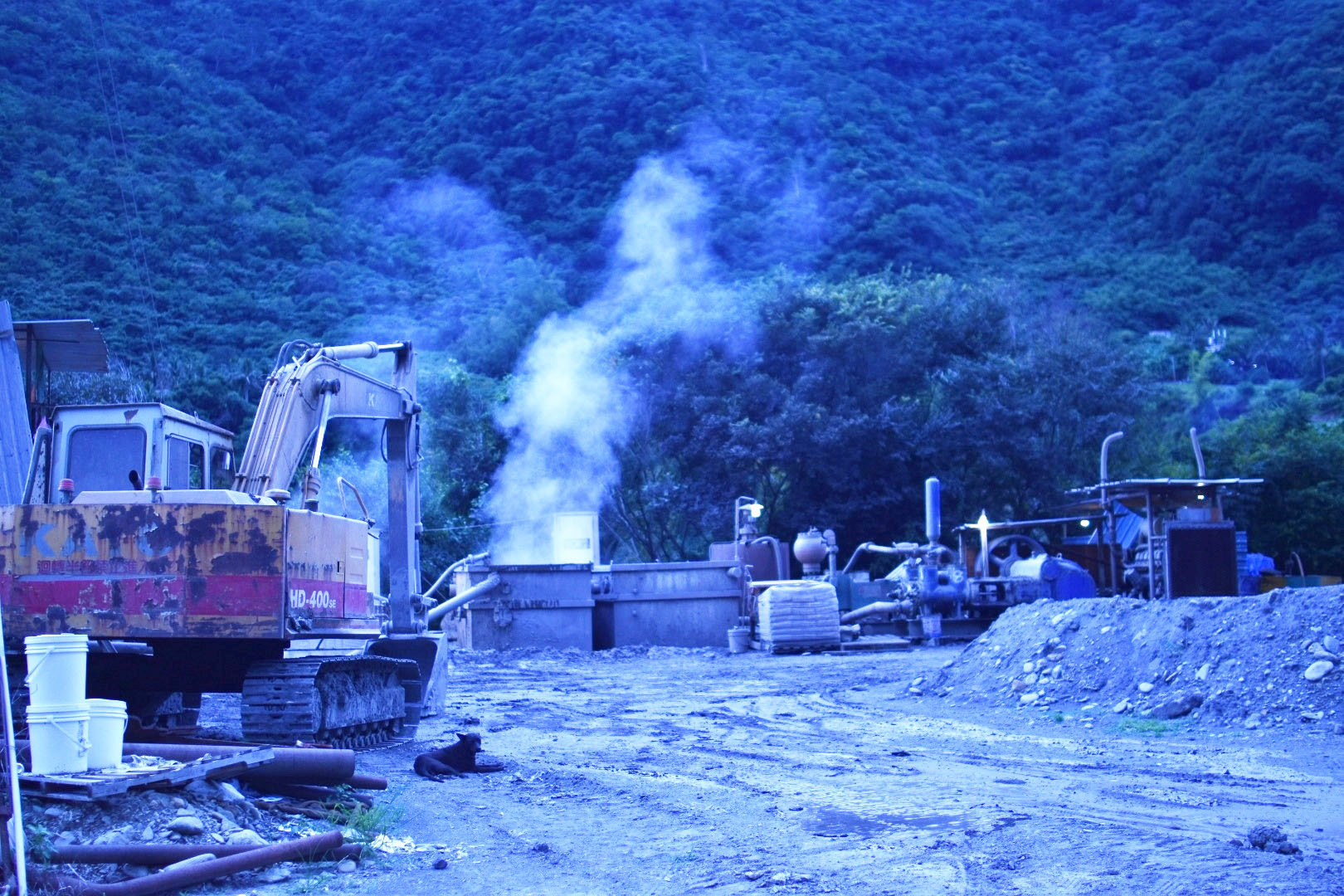
The view of Taimali-Chinlun Geothermal Area inspires Zeng.
The local workers told Zeng that Taiwan is located in the Pacific Ring of Fire, and has an advantage in developing geothermal power. The geothermal station at Taimali-Chinlun Geothermal Area operates 24 hours per day without being affected by the weather. It pumps geothermal hot springs from a depth of 1,500 meters underground, generates electricity, and then sends the water back to the ground. Such a cycle produces great energy for future power supply, and what’s more importantly, it is eco-friendly – having zero carbon dioxide (CO2) emissions and no water depletion, – making it a symbol of green energy and a sustainable economy.
However, in this land, from the prehistoric age to the Japanese colonial period and till now, people have tried various ways to detect the invisible geothermal resources under the ground and the white steam coming from the surface. The detecting was not easy because it involved many conflicts with the environment, nature and humanities. In his architectural design, Zeng hopes to show the unseen natural elements such as temperature, touch, and sound through more realistic materials.
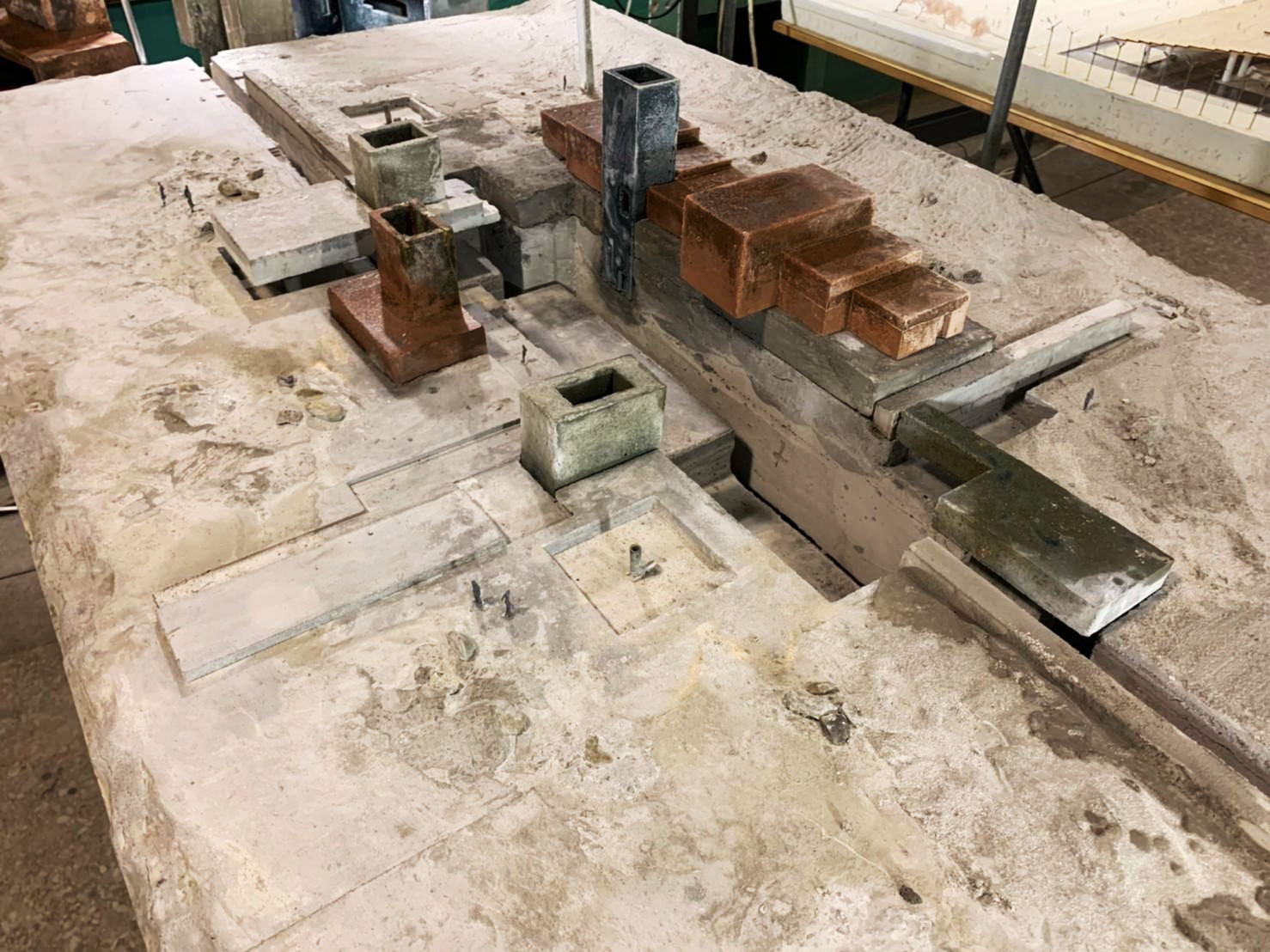
Zeng made the architectural model with the sustainable material he invented.
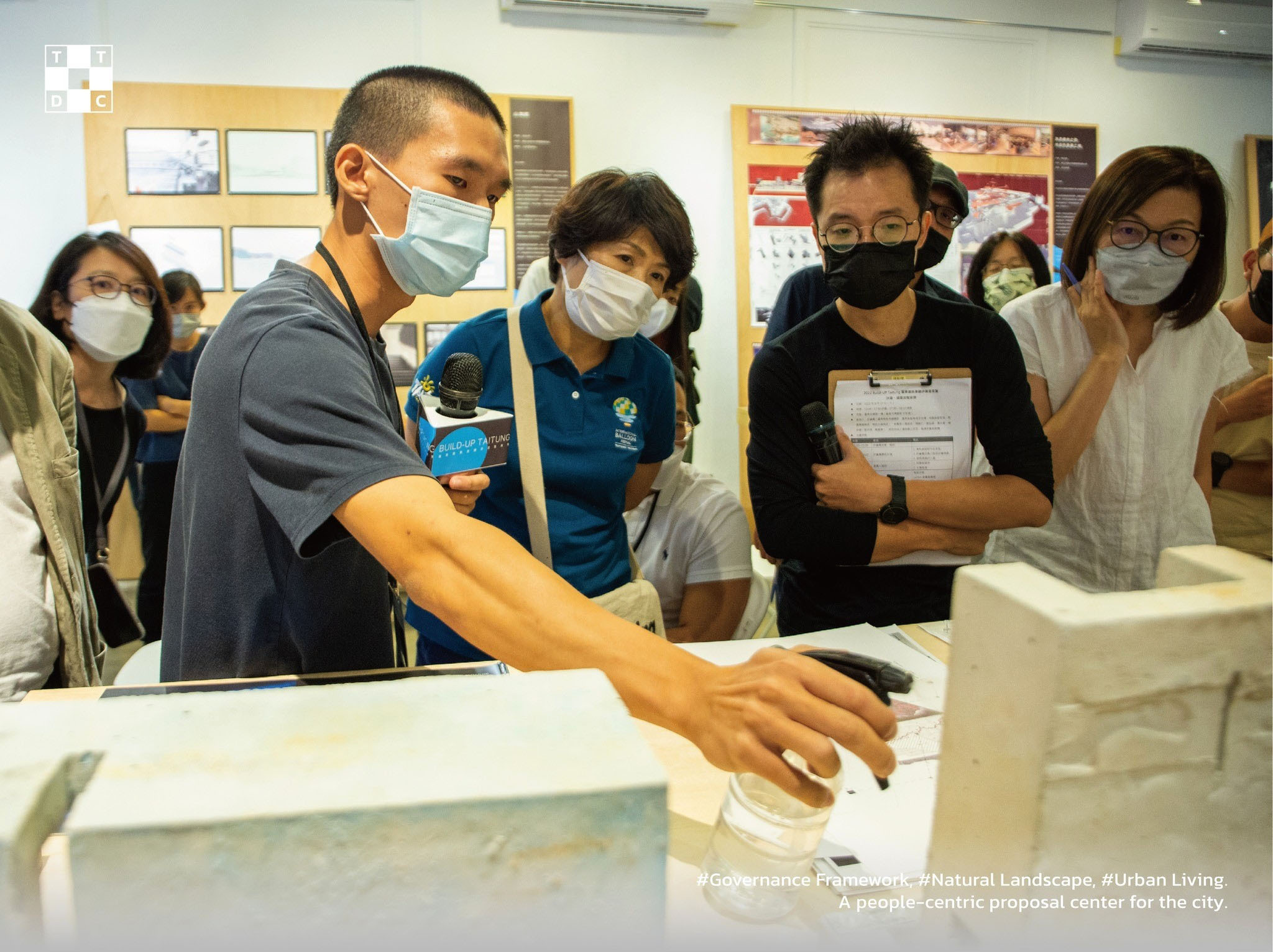
Zeng won a gold award in Build-UP Taitung Exhibition of Landscape Architecture Graduation Design. (Credit to Taitung Design Center)
“I want to try new things under the theme of sustainability using my knowledge on geothermal power” Zeng said, NCKU is full of resources. Once a goal is set up, students should actively seek out the needed resources. Zeng’s instructor, Holing Chang (張鶴齡), gave students a lot of freedom to explore what they want. After Zeng came back from Taitung, the idea of “using local materials and new construction process” lingered on. Later, he contacted Shuen-Ren Liou (劉舜仁), professor of the Department of Architecture for help.
Following the theme of sustainability, Zeng wants to combine ash, the remainder of the geothermal energy generation, with local laterite, black slate, serpentine, and blue dye powder to make sustainable ready-mixed concrete. In his graduation project, “Yu-Di-Yi-Jan,” Zeng expresses the strong energy of the land, presents the theme of sustainability by using sustainable materials.
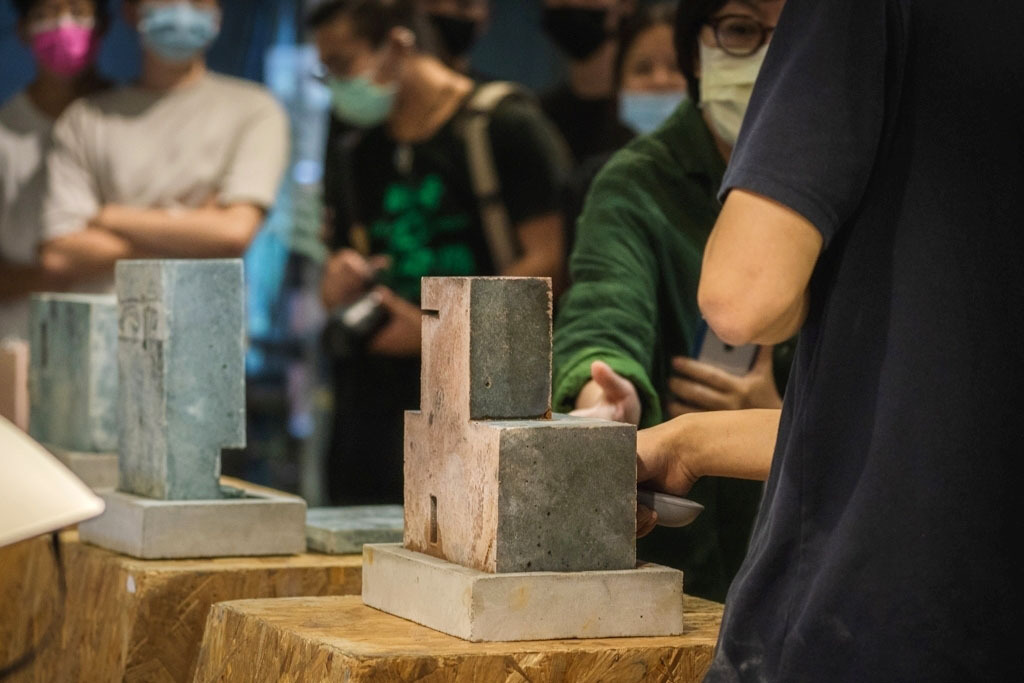
“Yu-Di-Yi-Jan” combines fly ash, the remainder of the geothermal energy generation, with local laterite, black slate, serpentinite, and blue dye powder to make sustainable ready-mixed concrete.
In the making of the architectural model, Zeng abandoned traditional materials such as wooden molds, glass, and ceramic tile; instead, he created new material which is sustainable. Zeng spent years experimenting in the lab, studying how to control the color temperature of the concrete so that it could be dyed accurately, and making sure the new material reduces 42% of CO2 emission. Zeng said, the process of making a model is complicated. If the ingredients for the material and the working time are not well-controlled, it leads to failure.
Zeng spent one whole semester on compounding stable material, experiencing uncountable failures before he successfully came to the final product. The professor who came to review the model suggested him to put emphasis on the sustainable material, instead of just combining geothermal power with the locals’ lives – present more possibilities on sustainability. The enhanced focus later became the key to earning the gold award.
Zeng said he is grateful to the NCKU for giving students freedom to experiment with different creations. In the future, he wants to return to NCKU to continue researching material-related issues. The theme of the 2022 Graduation Project Exhibition of the Department of Architecture is to find the physical and emotional connection between people and architecture, and to open up opportunities for public dialogues and reflection. The concept of “Yu-Di-Yi-Jan” is to transform a geothermal power station into a place where people can learn about geothermal power generation and feel relaxed by getting close to nature, aiming to build connection between the land and people. Zeng learned a lot from working on the graduation project. Through experimenting with his own hands, making sustainable materials, he feels the difference from merely drawing with a computer, which is having more connection with the land. Thanks to the recognition of the gold award, Zeng has a clearer vision for his future career. He wants to continue devoting himself to design and keep developing ideas for Taiwan's environment.
Provider:
News Center
Date:
2022-10-29



